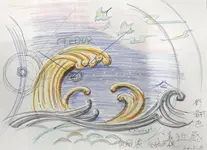Un extracto con algunas cosas muy interesantes, sobre todo la razón por la que Seiko no hace relojes sumergibles a más de 1000m, (cosa muy criticada por algunos amantes de los suizos y de los "ejercicios de estilo" de relojes sumergibles a mucho más de 1000m):
I took advantage of the situation and asked Mr Tokunaga a few questions which I have had for a long time.
- Mr Tokunaga likes ceramics and titanium, these are the best materials for diver’s watches.
- SEIKO sets their maximum depth standard to 1000m for a reason. 500m is the deepest any diver has dived and SEIKO therefore doubled their standard to 1000m which will be most sufficient to any human.
- The reason for SEIKO using silicone instead of natural rubber for the straps is simply because it’s better. Natural rubber will break and can’t handle the ISO/JIS/Seiko divers watch standard. Silicone is also better when it comes to heat-exposure.
- Before SEIKO as the first manufacturer in the world (1993) started to use lumibrite , they used Prometium, NEVER Tritium. The reason for this was the very strict Japanese restrictions regarding radioactivity which only promitted max 3,7 Becquerel.
- The reason for SEIKO using a gasket under the bezel is simply to get the right friction.
- It takes 24 hrs to adjust to the depth of 300m-600m but it takes approximately 12 days to readjust to atmospheric pressure after SAT-diving.
Esto (en negrita y subrayado) me ha dejado ojiplático:

Day 7 meant flying back to Sweden so not much to say about that. The trip was amazing and I found the production interesting, however I appreciate even more to get to know the people behind the watches, both the management of SEIKO and the designers, engineers, watchmakers and other employees. It is safe to say that my SEIKO addiction is now worse than ever,
the first thing I did on the plane back home was to buy back a SBGX117 and a 7c46 Tuna.











 :
:








